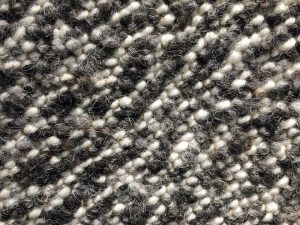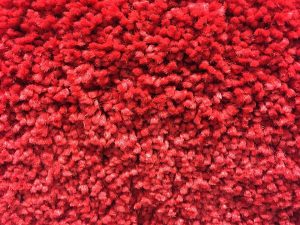Carpeting 101
If you walk into any carpeting store, you’ll find yourself amazed at all of the choices that are there for you to pick from. You’ll find textured plush carpets, saxony carpets, berber carpets, and even commercial grade carpets. There are carpets that can be installed wall to wall, and carpets that can be cut to size with bound edges and carpet squares.
Your first consideration when purchasing a new carpet should not be color, even though it is important. Your first consideration should be how much traffic you are going to have on the carpet. If you plan to put carpet in the bedroom, then it won’t have as much traffic as carpet in the living room.
Stain resistance will also be important. This is something to think about with any carpet, especially carpet that is going to be used in a dining room or play room area where there will be a steady stream of food or possibilities for spills.
You’ll also want to inquire about the rating of the carpet as well. Indoor carpeting is normally rated on a scale of 1 to 5, with 5 being the highest rating. Carpets with a 5 rating are considered the best for heavy traffic areas. Rating of 4 are considered outstanding and recommended for heavy traffic areas of your home.
Ratings of 2.5 to 4 would provide normal durability for your home. Carpets that rate 2.5 or lower should only be used with light traffic areas, such as bedrooms. Choosing carpet based on the type of traffic it will receive can help you save a lot of money down the road, although you should buy carpet suited to your needs and requirements.
Natural Fiber Carpet
 Natural fibers used with carpet are produced either by insects, animals, or even plants. The fibers that are produced by insects or animals are known as protein fibers. Those that are made by plants are known as vegetable fibers. Vegetable and protein fibers share the common disadvantage that they are both very absorbent and will have extended drying times when wet cleaned – which can lead to mildew, shrinkage, and even dry rot.
Natural fibers used with carpet are produced either by insects, animals, or even plants. The fibers that are produced by insects or animals are known as protein fibers. Those that are made by plants are known as vegetable fibers. Vegetable and protein fibers share the common disadvantage that they are both very absorbent and will have extended drying times when wet cleaned – which can lead to mildew, shrinkage, and even dry rot.
Check Out: What Colors Suit Your Dwelling to learn more about how to pick the right carpet color
Type of Natural Fiber Carpet
Wool
Wool fiber is produced from the fleece of lambs or sheep. Wool of carpet is imported from countries such as England, Australia, and New Zealand. Wool is the oldest and considered to be the finest of all carpet material.
The ability of wool to stretch up to 40% of its original length and the fact that it can be bent back and forth more than 180,000 times without breaking makes it very resilient. Wool is the most expensive material for carpet, although it is also the best you can buy.
Silk
The fiber of silk is produced by the larva of various insects known as silk worms. The silk, in continuous lengths from 300 to 1600 yards is spun to produce the cocoons. As a fiber, silk is naturally nonflammable, strong, and not affected by static charge problems – even at low humidity.
Cellulose fiber
This type of fiber is produced by plants and normally not used as face yarns. These types will however, show up as backing materials of tufted as well as carpets that have been woven.
Cotton
Cotton is a vegetable seed fiber that is produced from the cotton plant. The primary use for this fiber is yarns woven in carpet or rugs. Cotton is resistant to alkaline solutions and becomes stronger when it is wet.
The biggest disadvantages to cotton is the fact that is the most absorbent of all fibers and requires extended drying times after being wet cleaned. It is also easily damaged by acids, stains easily, mats down, soils quickly, and is subject to mildew, dry rot, and shrinkage.
Jute
The fiber of jute is produced by the jute plant which grows in South America, Pakistan, and even in India. The stalk of the jute plant is where the longer coarse fibers are obtained, located between the outer bark and within the inner pulp.
Jute is normally used as weft yarns, across the width, in woven carpets and as a backing material in the construction of tufted carpets. Jute is an inexpensive material that also serves other uses than just carpet. Like all other fibers, this one has disadvantages as well. The fiber is weak when it becomes wet and is also subject to dry rot, shrinkage, and mildew.
Sisal
The fiber of sisal is produced by the leaves of the agave plant. Sisal is very strong and primarily used for making rugs, sacking, rope, and even carpet. The fiber stains easily and is also very difficult to clean. Wet cleaning can also cause shrinkage so its best to use low moisture methods.
Rayon
There is quite a bit of confusion about rayon and it is easy to understand why. Rayon is a synthetic fiber that is produced from natural cellulosic fibers of wood pulp or cotton. The material is put through several chemical treatments which help to turn it into a synthetic fiber.
Primarily, rayon is used for area rugs because of its silk like appearance. It can be damaged by acids, has low resistance to abrasion and is also prone to cellulose browning.
Synthetic Fiber Carpet
 Synthetic fibers used with carpet are produced primarily of plastic. Synthetic fiber carpeting is less prone to wear and tear, is highly stain resistant, and considerably cheaper than natural fiber carpeting.
Synthetic fibers used with carpet are produced primarily of plastic. Synthetic fiber carpeting is less prone to wear and tear, is highly stain resistant, and considerably cheaper than natural fiber carpeting.
Type of Synthetic Carpet
Polyester
The fiber of polyester was first introduced into the garment industry around in the 1950s. By the late 1960s, polyester was introduced into the carpet industry as a face yarn. In hand, feel, and appearance it is similar to nylon, although it doesn’t possess that same resiliency.
Polyester doesn’t absorb water based spills, isn’t affected by urine or kool-aid, but it will absorb oil based spills. Polyester is non-allergenic and mildew resistant.
Acrylic/modacrylic
Both of these fibers were first used as carpet yarns around the late 1940s. They disappeared around 1988 due to the competition from other fibers.
It was reintroduced to the market around 1990 in Berber styling.
This was done so that people could take advantage of the wool like appearance, hand feel, and the fact that its more spot resistant, much easier to clean, and not damaged in the ways that wool is.
Olefin
Olefin is the latest of the synthetic fibers to be adopted to carpets. Once only available in continuous filament, it is now produced in staple form as well. Olefin has a wide variety of uses that include primary and secondary backing of tufted carpets, warp yarns, and other uses as well.
The color consideration is also important. Light colored carpets create an effect of a larger space, although they do tend to show stains more easily. Dark carpets on the other hand tend to absorb light, giving a room what many know as the “cozy feeling”.
When you find a carpet that appeals to you, you should ask to take a piece of it home. Look at it during natural daylight and at night under an artificial light to see if the color changes at all.


